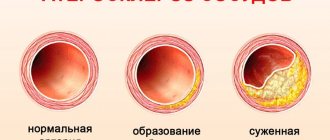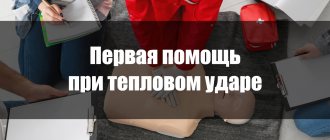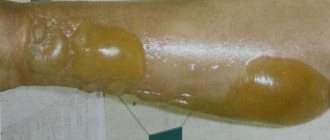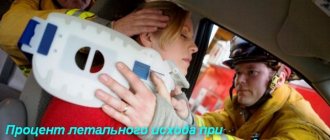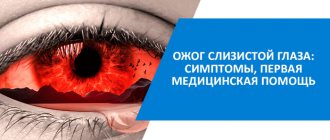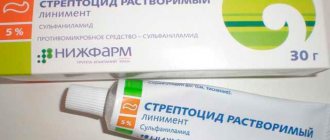A burn is damage to body tissue resulting from exposure to high temperature. In addition to thermal, burns can also be electrical, chemical and radiation.
Thermal or heat burns are the most common, especially in the younger age group - in young children, the vast majority of burns occur as a result of scalding with boiling water.
There are several classifications of burns; in our country, the A.A. classification is accepted. Vishnevsky, dividing damage into degrees depending on the depth of tissue damage. Knowing the classification allows you to quickly navigate the situation and not make mistakes when providing first aid. So, according to Vishnevsky, there are 4 degrees of burns:
- Stage of erythema, or redness;
- Bubble stage;
- Stage of skin necrosis;
- The stage of necrosis of the skin and underlying tissues (fatty tissue, muscles, tendons, and sometimes bones), also called the charring stage.
The first two stages are classified as mild, while the third and fourth stages are classified as severe or deep burns. This division is arbitrary, since it does not take into account the area of the lesion and special anatomical zones (these include the face, eyes, groin area, joints), however, it gives an idea of the severity of the lesion and what first aid measures should be taken.
Types of burns and their features
There are several types of classification of burns. According to the situation in which they occurred, they distinguish military, household, industrial and other burns. According to the mechanism of appearance - thermal, electrical, chemical, radiation, and so on. Let's take a closer look at them.
Thermal burn
Occurs most often. Occurs when a part of the body comes into contact with open fire, hot surfaces, steam, boiling water, etc. Thermal burns can damage the skin or mucous membranes; in severe cases, muscle tissue can be damaged. The severity of the injury depends on the duration of the victim's contact with the fire, the thermal conductivity of the hot substance, and other factors.
There are 4 degrees of thermal burn
| Degree | Description |
| I | Minor damage, redness of the skin. |
| II | Bubbles filled with liquid form on the skin. Swelling and redness in the affected area. |
| III-A | The skin is seriously affected, to a great depth. The hair follicles are not damaged, the sebaceous and sweat glands are functioning. |
| III-B | Destruction of all layers of the skin. |
| IV | The skin and underlying tissues are completely affected. Necrosis develops. |
(Infographics and poster first aid for burns on stands, available by clicking the download button)
Burns up to grade III-A inclusive can be treated at home using conservative methods. More serious damage can only be repaired through surgery.
Another type of thermal burn is frostbite. Occurs when exposed to low temperatures, for example, upon contact with gases. It is characterized by severe redness of the skin, the appearance of blisters and spots. With deep frostbite (upon contact with liquid nitrogen), the skin may turn black and symptoms of severe intoxication will appear.
Chemical burns
They occur when certain substances come into contact with the skin or mucous membranes. The greatest danger in this case is:
- Acids;
- alkalis;
- phosphorus, etc.
Many household products can also cause burns.
Chemical burns caused by acids are characterized by the formation of a dry and dense scab. When exposed to sulfuric acid, the crust becomes black; if the burn is caused by nitric acid, the scab is yellowish. Swelling and redness of the skin are moderate.
In case of burns with alkalis, the soft scab is white, in case of deep burns it is light green. Swelling and redness of the skin are significant. There are signs of intoxication of the body - nausea, vomiting, fever.
Additional material: First aid for chemical burns.
Other burns
Radiation burns – occur when exposed to radiation or sunlight. Almost always accompanied by nausea, vomiting, and depression. Radiation burns cause redness of the skin, swelling forms in the area of the hair follicles, as well as near the sebaceous and sweat glands, and blood circulation in the capillaries is disrupted.
Electrical burns are formed when an electric current passes through the victim’s body. This injury can occur from contact with an electrical outlet or being struck by lightning. In most cases, the damage characteristic of a burn is visible only at the site of entry and exit of the current, but similar changes also occur in the tissues along the path of electricity.
Burns can also be combined - caused by a combination of several factors.
Read the article: Burn injury and first aid when receiving it.
Clinical researches
La-Cri creams for sensitive skin and La-Cri cream for dry skin are recommended by the St. Petersburg branch of the Union of Pediatricians of Russia.
The conducted clinical study proves the high efficiency, safety and tolerability of products for daily skin care of children with mild and moderate forms of atopic dermatitis and during remission, accompanied by a decrease in the quality of life of patients. As a result of therapy, a decrease in the activity of the inflammatory process, a decrease in dryness, itching and flaking was noted.
First aid for thermal burns
The algorithm for providing first aid for a thermal burn will depend on its severity. The depth of skin damage can be judged by the behavior of the victim. Thus, with burns of degrees III-A and IV, a person does not react to touching the wound with a swab soaked in alcohol. Also in this case, the hair in the affected area can be pulled out without difficulty.
It is important to assess the area of the lesion. In medicine, it is accepted that the area of each of the following zones is 9% of the body area:
- Head and neck;
- hands;
- breast;
- stomach;
- back;
- shin;
- hip;
- genitals.
Having quickly assessed the condition of the victim, you can begin providing first aid.
Algorithm and procedure for providing first aid for first and second degree burns:
- Eliminate the factor that caused the burn. If clothing is on fire, pour water on the victim or wrap him in thick cloth.
- Treat the burn with a weak solution of potassium permanganate.
- Place a bandage or clean cloth over the injury.
- If the burn area is large, treat it with Panthenol or Alazol ointment.
- If there is pain, you can give a painkiller.
If signs of infection appear - swelling, purulent discharge, increased body temperature, consult a doctor. Under normal conditions, the skin will recover on its own.
Actions for a 3rd degree burn:
- Assess the condition of the victim - pulse, breathing, response to external stimuli.
- Call an ambulance.
- Place a clean cloth soaked in cold water on the burned area of the body.
- If your fingers are burned, try to remove the rings (if any) from them, and isolate the affected finger from the healthy one.
- To prevent burn shock, give painkillers and plenty of fluids.
Do not stop monitoring the victim's condition until the ambulance arrives. Pay special attention to behavior, pulse and breathing.
Actions for fourth degree burns:
- Remove the source of the burn.
- Call the emergency services team.
- Assess the condition of the victim.
- Remove his clothing, except for the areas stuck to his skin.
- Wrap the victim in a blanket, jacket, or something similar to prevent heat loss, which is dangerous with a fourth-degree burn.
- Take measures to prevent burn shock - give any strong painkiller or a combination of one diphenhydramine tablet with two analgin tablets.
- Give plenty of fluids, maybe hot tea or mineral water.
Remember that when a burn occurs, the wound is sterile by default. Do not apply plants, potatoes, sour cream, egg yolk or other traditional medicine to it. This will help avoid infection.
If the head, respiratory organs, or genitals are affected, an ambulance should be called, regardless of the degree of the burn.
What to do if you burn yourself with an iron?
Iron burns are a common phenomenon that also causes a lot of trouble. Children who are interested in this household appliance often inflict injuries on themselves using a hot iron.
The pain of an iron burn goes away if you treat the damaged skin with glycerin . Another method is regular mint or propolis toothpaste. It is applied to the burn site in a thin, even layer.
You can treat a burn from an iron using the following folk remedies:
- Chicken egg white is mixed with chopped cabbage leaves 1:1. Applied to the burn site;
- 30 grams of nettle color are infused for an hour in one liter of boiling water. Strain, moisten gauze with infusion and use as compresses. It is worth noting that nettle has wound healing properties. By taking two tablespoons of stinging nettle, pouring a glass of boiling water over it, leaving for 20 minutes and drinking a third of a glass of the infusion three times a day, you can speed up the healing process.
- Honey compress accelerates wound healing and acts as a local anesthetic.
First aid for frostbite
The principles of providing first aid when exposed to low temperatures depend on what caused the injury. So, in case of a burn with liquid nitrogen, you need to do the following:
- If there is a deep burn, call an ambulance.
- The person who has lost consciousness must be taken out into fresh air.
- Wash the burned area with water, the temperature of which is not higher than 45 0C, until the skin turns red.
- Apply a sterile bandage.
- Keep monitoring your physiological indicators.
In case of burns at low temperatures, it is forbidden to rub the affected area, give alcohol, or allow a sharp temperature change (to quickly heat the damaged area of skin).
Read the article: Frostbite and first aid for cold injury
Determining the degree
In order to prescribe adequate treatment for yourself, you need to understand the degree of burn you received.
- First. The mildest degree, in which the skin can only turn red. A small bubble filled with fluid may appear.
- Second. Pronounced slight swelling is noticeable. Bubbles with liquid appear without fail. Skin scabs may appear.
- Third. The burn is deep, affecting the muscles. Sometimes the damage even reaches the bone. The bubbles that are also sure to appear will already have burst.
- The fourth degree is associated with the most severe tissue damage. The skin chars at the point of contact with a heat source, electricity or chemical composition. Only the first, second and mild third degrees can be treated at home. Extensive burns of thirds and, especially, fourths require immediate medical measures in medical institutions.
First aid for chemical burns
Methods of providing first aid for chemical burns depend on what substance the victim came into contact with.
Let's look at the basic rules:
- If the victim is not breathing, does not respond to pain medication, the substance has contacted the genitals, or the affected area is more than 7.5 cm2, you should immediately call an ambulance.
- In case of burns with acid or liquid alkali, rinse the skin generously with water for 10-15 minutes.
- There is no need to use neutralizers: the reaction that occurs will aggravate the burn.
- If affected by phosphorus powder, it is first removed with tweezers, then washed with plenty of water. The same applies to any powdered alkalis.
- Quicklime cannot be washed off with water.
- It is forbidden to pour water on the skin if the burn is caused by organic aluminum compounds: they will catch fire.
- After treating the burn, you need to apply a sterile but not tight bandage and wait for the ambulance team to arrive or take the victim to the hospital yourself. It would be better if it was a burn center or department.
For chemical burns, it’s good if you can take a little substance in a jar. This will help doctors determine what is causing the problem and quickly navigate further therapeutic measures.
When can you do without a doctor?
You can treat minor household injuries yourself. Minor injuries are considered to be injuries that manifest themselves as redness or small blisters, if the pain stops after applying Panthenol foam. It is also possible to treat at home if the affected area is no more than 5 centimeters in circumference.
In such cases, you need to give the victim a painkiller, drink plenty of fluids, and apply special anti-burn products to the skin - Panthenol, Dexpanthenol. Such products promote rapid restoration of the epidermis, relieve pain and inflammation, and prevent the development of complications.
General rules for first aid
The level of education in first aid leaves much to be desired, so eyewitnesses to incidents often make mistakes. Let's give general rules.
- Even in the case of a first-degree thermal burn, you need to monitor the patient’s condition, his pulse, breathing, and reaction. Moreover, this must be done in more severe conditions.
- Blisters should not be opened in case of any burn.
- It is forbidden to apply oils, compresses and other remedies, including folk remedies.
- If you have frostbite, you should not rub the affected skin or give the victim alcohol.
- It is important to take measures for your own safety, to protect your hands from infection with latex gloves, if possible.
We recommend studying the article: Proper first aid.
If, during the provision of first aid for burns, a person was given any painkillers or other drugs, you need to remember their name, then inform the medical specialist receiving the victim. This information may be important for further treatment of burns.
Sources:
- Fainshtein V.I. "Safety in the production and use of air separation products."
- Textbook by D.V. Marchenko "First medical aid for injuries and accidents."
Consumer Reviews
A user named Angelina on otzyvru.com writes about La-Cri for sensitive skin:
“Girls, I’m sharing with you my huge discovery! I had very dry skin trying to get rid of pimples. Even foundation was scary to apply, because it emphasized all the peeling, of which there were a lot. I tried a cream for sensitive skin - everything went away. Within a week, the skin was very well nourished, but it did not become oily or anything else. I didn't notice any rashes either. So I'm happy :)"
User Ekaterina Pospelova (irecommend.ru) highly appreciates the La-Cri cream for sensitive skin, noting that the product instantly relieves burns
“should be in every first aid kit, it saves you from burns instantly
This cream ended up in our family medicine cabinet by accident. I went for an ointment for mosquito bites and the pharmacy recommended it. It is universal and very practical. Instantly relieves any redness, be it diaper rash on the butt or severe peeling on my face, or a mosquito bite at our dad's. Once I was burned very badly, the pain did not subside, I read in the annotation that it also helps with burns, the pain was relieved immediately, the burn went away in two days. Well, it’s like a miracle cream, and it costs 30 grams for 180 rubles at the pharmacy. Today I went for a second one with such a tube, I have no doubt that I will go for a third one. In my opinion, the composition contains nothing extra: avocado oil, panthenol, licorice extract, bisabolol, walnut extract, violet and string extracts, rosewood oil. But the smell and color are not It’s so terrible, it only leaves marks on clothes, but we don’t smear it on clothes).”
Sources:
- Fundamentals of health development in children. Textbook. — Moscow: Mir, 2016. — 384 p. Tulchinskaya, V.D. Nursing assistance to children / V.D. Tulchinskaya. — Moscow: Russian State University for the Humanities, 2021. — 368 p.
- Andropova T.V., Gudina M.V., Odintsova I.N., Hygiene of children and adolescents, publishing house: Siberian State Medical University Publishing House, 2021 - 101 p.
- Cohen Bernard A. Pediatric dermatology, publishing house: MEDpress-inform, 2015
- Boniface Ernesto, Differential diagnosis in pediatric dermatology, publishing house: Panfilov Publishing House, Binom. Knowledge Laboratory, 2014
How to relieve pain
Before using ointment for burns with boiling water, you need to get rid of the pain. Numbing a severe burn is important for several reasons.
- First, thoughts will clear up and it will become clearer what to do next, what home recipe to use and whether it is worth calling an ambulance.
- The second reason is that it will be easier to treat the burn.
The first thing to do for pain relief is to cool the burned area of skin under running cold water or by lowering the burned limb into a container of cooled water. According to some reviews, baking soda gives a good pain-relieving result . Lightly sprinkle it on the burn area or make a lotion from a solution of soda and boiled water. If you have Rescuer ointment in your first aid kit, you should use it.
Sea buckthorn oil and goose fat work well, but they must be applied strictly after the burn has cooled.
